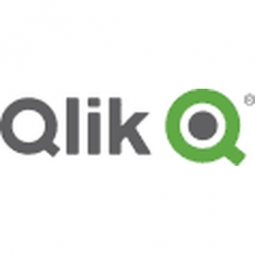Customer Company Size
Large Corporate
Region
- Europe
Country
- France
Product
- QlikView
Tech Stack
- BusinessObjects
- Microsoft Excel
- AS/400
- Oracle
Implementation Scale
- Enterprise-wide Deployment
Impact Metrics
- Cost Savings
- Productivity Improvements
Technology Category
- Analytics & Modeling - Real Time Analytics
Use Cases
- Predictive Maintenance
- Process Control & Optimization
Services
- Data Science Services
About The Customer
Created in 1968, The Communauté Urbaine de Dunkerque (CUD) is a municipal body with the stated aim of maintaining the wellbeing of the region’s 198,000 inhabitants. The CUD comprises 16 communes and covers 250,000 square kilometres in the north-east of France. The CUD today has three essential tasks: running major public services including waste management, transport and road infrastructure; city development including financial development, tourism, sport, culture, sustainable development and education; and ensuring social cohesion in the region.
The Challenge
In 2008, the CUD‟s general management launched a project to assess the public body‟s spending efficiency. They had to look at predictable areas of spending on human resources, finance and energy. The team faced a daunting challenge. In order to assess spending efficiency, they had to obtain information on the relevant parts of the business including human resources and finance. They then had to provide management tools to the departments concerned, in order to carry out management analyses, and correlate public policy with the resources used. This was a typical business intelligence (BI) project, with a familiar challenge: the data was highly disparate, while there was a need for consolidate and cross-reference of data across very different areas of the organization.
The Solution
The CUD deployed QlikView for forty managers who can now assess how efficiently their budgets are being used and ensure they comply with public policy. Following the integration of data from different systems, the managers are creating dashboards and rich, interactive reports themselves. Today, about ten different resource management applications are either being used or in development. The greatest strength of the QlikView solution is that it is so simple to use and yet highly flexible at the same time. And while you may require some database expertise to integrate data at the very start, you don‟t have to be an IT expert for the retrieval stage.
Operational Impact

Case Study missing?
Start adding your own!
Register with your work email and create a new case study profile for your business.
Related Case Studies.

Case Study
Remote Monitoring & Predictive Maintenance App for a Solar Energy System
The maintenance & tracking of various modules was an overhead for the customer due to the huge labor costs involved. Being an advanced solar solutions provider, they wanted to ensure early detection of issues and provide the best-in-class customer experience. Hence they wanted to automate the whole process.

Case Study
Predictive Maintenance for Industrial Chillers
For global leaders in the industrial chiller manufacturing, reliability of the entire production process is of the utmost importance. Chillers are refrigeration systems that produce ice water to provide cooling for a process or industrial application. One of those leaders sought a way to respond to asset performance issues, even before they occur. The intelligence to guarantee maximum reliability of cooling devices is embedded (pre-alarming). A pre-alarming phase means that the cooling device still works, but symptoms may appear, telling manufacturers that a failure is likely to occur in the near future. Chillers who are not internet connected at that moment, provide little insight in this pre-alarming phase.

Case Study
System 800xA at Indian Cement Plants
Chettinad Cement recognized that further efficiencies could be achieved in its cement manufacturing process. It looked to investing in comprehensive operational and control technologies to manage and derive productivity and energy efficiency gains from the assets on Line 2, their second plant in India.

Case Study
Airbus Soars with Wearable Technology
Building an Airbus aircraft involves complex manufacturing processes consisting of thousands of moving parts. Speed and accuracy are critical to business and competitive advantage. Improvements in both would have high impact on Airbus’ bottom line. Airbus wanted to help operators reduce the complexity of assembling cabin seats and decrease the time required to complete this task.

Case Study
Aircraft Predictive Maintenance and Workflow Optimization
First, aircraft manufacturer have trouble monitoring the health of aircraft systems with health prognostics and deliver predictive maintenance insights. Second, aircraft manufacturer wants a solution that can provide an in-context advisory and align job assignments to match technician experience and expertise.




